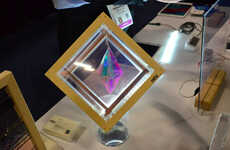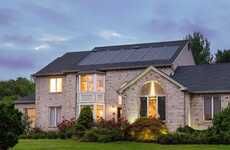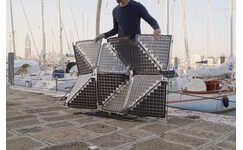
Dyaqua's Panels are Indistinguishable from Common Building Materials
References: dyaqua.it & fastcodesign
Italian engineering firm Dyaqua has created what it calls "invisible solar" panels. While the panels would be virtually impossible for the average person to notice, no matter where they're installed, they aren't actually invisible, of course. Rather, Dyaqua has developed solar panels that can be disguised to look just like a host of common building materials.
Solar panels are an excellent way to save energy and money, but everyone is familiar with how conspicuous normal solar panels are when they are installed on a roof. For building- and homeowners with an eye for style, Dyaqua's solar panels can give the same environmental and economic benefits as traditional panels without the futuristic look.
Dyaqua's panels come disguised as several different building materials, including terra cotta, stone, slate, concrete, and even a material as nuanced as raw wood.
Solar panels are an excellent way to save energy and money, but everyone is familiar with how conspicuous normal solar panels are when they are installed on a roof. For building- and homeowners with an eye for style, Dyaqua's solar panels can give the same environmental and economic benefits as traditional panels without the futuristic look.
Dyaqua's panels come disguised as several different building materials, including terra cotta, stone, slate, concrete, and even a material as nuanced as raw wood.
Trend Themes
1. Invisible Solar - Developing solar panels that can be disguised to look like common building material to make the integration of solar technology more aesthetically pleasing.
2. Disguised Technology - Incorporating advanced technology into everyday items to provide the benefits of innovation without the appearance of futuristic technology.
3. Sustainable Architecture - Striving to integrate energy-saving technology into building design without compromising on aesthetics.
Industry Implications
1. Construction Industry - Incorporating Dyaqua's panels into building plans to increase sustainability efforts and provide aesthetically pleasing design options.
2. Renewable Energy Industry - Developing advancements in solar technology to increase adoption rates and reduce environmental impact.
3. Architectural Design Industry - Collaborating with engineering firms to create designs that integrate sustainable technology in ways that enhance building aesthetics.
4.8
Score
Popularity
Activity
Freshness























